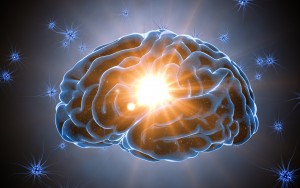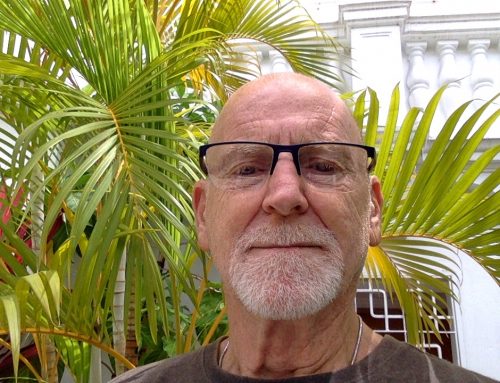Neural Plasticity in Recovery
The old adage “once an addict always an addict” was the dominant mindset of society for much of our history. Then came the advent of 12 Step Programs starting with anonymous programs like AA and then NA. This came with an increased understanding within the medical and scientific communities about the nature of addiction and this mindset began to shift. This is not to say that a person at this point in time can be cured from the disease of addiction, but it does however mean that the person afflicted no longer has to suffer their entire life with the symptoms attributed to the disease.
Whereas it was once believed that a brain damaged by addiction could not mend itself, new breakthroughs in science have shown that this is not true. This means that the damage that we have caused to our brains during our addictions may have destroyed certain neurons to the point of no repair, but that the brain can create new pathways around these neurons in order to heal itself. This creation of new neural pathways is known as neural plasticity.
What is Neural Plasticity?
Neural Plasticity at its most basic level is the brain’s ability to reorganize itself by forming new neural connections throughout life. This reorganization of the brain can occur due to damage and the brain’s need to find new neural pathways that are not damaged or through learning. The fact that learning can actually cause the brain to change is a fairly new discovery, because for many years it was thought that after a certain age the brain’s network of pathways became fixed and could no longer change. The environment is also a key contributor to plasticity, where a person’s environment and their actions within that environment contribute to the creation of neural pathways within the brain.
What Does Neural Plasticity Mean to Recovery?
The American Society of Addiction Medicine defines addiction as a primary, chronic disease of brain reward, motivation, memory and related circuitry. This definition exposes in part why neural plasticity is so important to recovery from addiction. Reward and motivation in the definition are what psychologist B.F. Skinner would refer to as Operant Conditioning, which is a method of learning that involves reinforcing desired actions. Every time that an addict ingests a substance they reinforce what their addiction wants them to do and so therefore they are actually creating new neural pathways, which are creating learned behaviors.
These learned behaviors create a scenario where they are repeated habitually over and over again, which in time makes the neural pathway stronger and stronger. As time progresses and the neural pathway gets stronger, the brain becomes trained to engage in the behavior of consuming drugs or alcohol over all other behaviors because that pathway is the only one that seems to bring any joy. In a sense addiction and its neural pathway completely takes over the brain’s pleasure center and so in time, and this is more on the biochemical side, the brain actually stops producing hormones that would produce pleasure because the substances are doing their job for them. This means that for many addicts the only way for them to experience any pleasure is through the consumption of drugs and alcohol, which is one of the driving motivators for the continued usage, because stopping is painful.
With the proper treatment, psychotherapy, and different self-help groups, a new neural pathway can be created to replace the old addiction pathway, and so the brain can begin to unlearn it’s ingrained addictive behaviors and began to heal, creating new and healthier patterns of action. This does not however mean that the old pathway are completely destroyed, but in fact they are still in the brain and intact which is why complete abstinence from drugs and alcohol is required for recovery. A person could not simultaneously create a new neural pathway to reroute the addictive pathway and continue to use drugs or alcohol, because this act would serve only to reinforce the addictive pathway.
How To Improve Neural Plasticity?
Our ability to create new neural pathways or learn new behaviors is paramount if we are to recover from our addiction. Luckily there are ways to increase neural plasticity and in turn help to reinforce your recovery.
Synaptic pruning is the process where the brain uses resources from old unused pathways, by diverting resources to strengthen neural pathways that are in demand. The illustration of feeding the two wolves is a good example of synaptic pruning. Many times in the rooms you will hear people talk about two wolves that we have inside of us. One is our addiction and the other is our recovery, we have to choose which wolf we are to feed. If we are feeding our recovery by engaging in the things that are necessary in order to maintain our sobriety, then through synaptic pruning more resources will be allotted there and they will be diverted from our old addiction neural pathway. So by engaging in recovery related activities we are actually reinforcing our new neural pathway and helping our brain’s plasticity.
Another way to improve neural plasticity is to try to reduce stress. Stress can be a motivator for change but prolonged stress can actually have adverse effects on the brain’s ability to adapt. Asking a newly sober person to try to reduce their stress level can seem like an impossible task, as getting sober can be one of the most stressful things that a person experiences, but the act of reducing stress levels can greatly help a person recover. This may simply mean taking time out every so often and breathing deep, or going for a walk. There are a number of ways to reduce stress and it is important in order to aid recovery.
As scientifically complicated as neural plasticity may be, increasing its effects and creating new neural pathways is as easy as finally putting down the drink or drug and attempting to do something new. The act of creating a new life in sobriety, doing life in a new way, having new hobbies, going to therapy learning how to process and feel emotions, making new friends, going to work, all of these reinforce a new neural pathway, a pathway that can mean freedom from your addiction.
 Rose Lockinger is a passionate member of the recovery community. A rebel who found her cause, she uses blogging and social media to raise the awareness about the disease of addiction. She has visited all over North and South America. Single mom to two beautiful children she has learned parenting is without a doubt the most rewarding job in the world. Currently the Outreach Director at Stodzy Internet Marketing.
Rose Lockinger is a passionate member of the recovery community. A rebel who found her cause, she uses blogging and social media to raise the awareness about the disease of addiction. She has visited all over North and South America. Single mom to two beautiful children she has learned parenting is without a doubt the most rewarding job in the world. Currently the Outreach Director at Stodzy Internet Marketing.
You can find me on my website, LinkedIn, Twitter, Facebook, & Instagram.








Leave A Comment